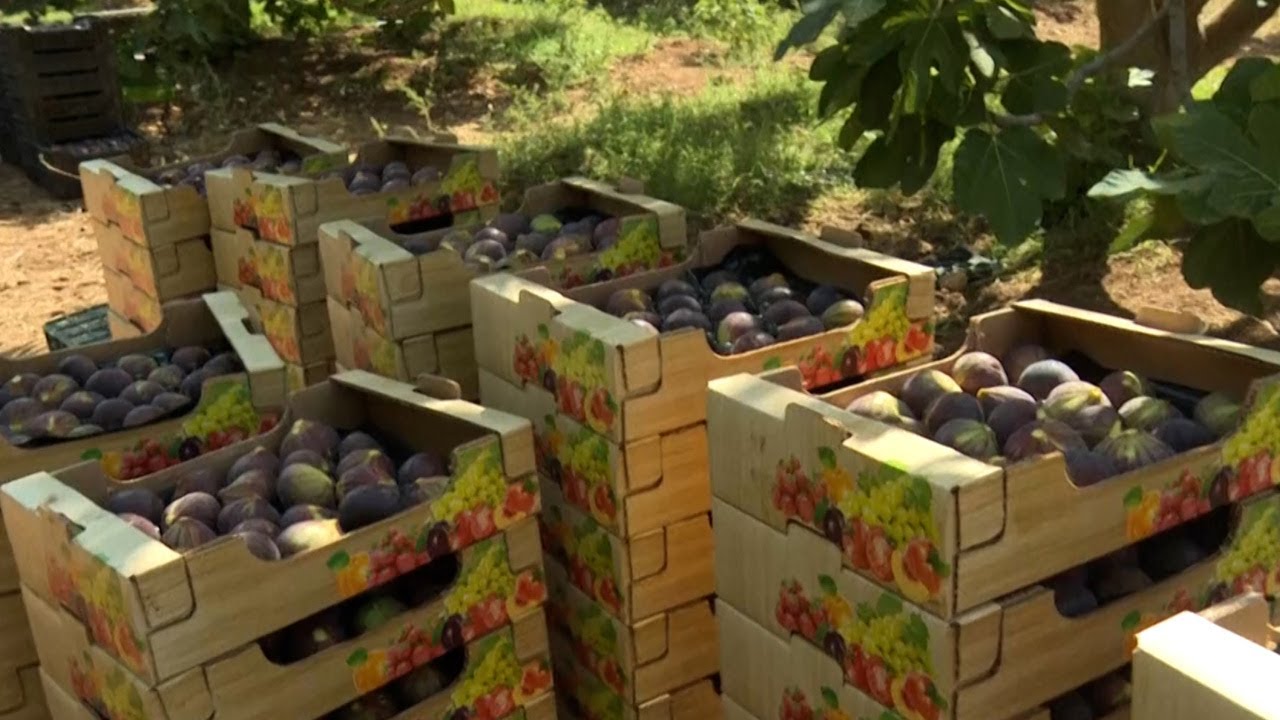High in the hills of northwest Tunisia, farmers plant thousands of fig trees with a unique system of terraces that they hope will protect them from harsh droughts.
Djba (Tunisia) (AFP) – High in the hills of northwest Tunisia, farmers tend thousands of fig trees with a unique system of terraces they hope will protect them from severe droughts.
But the “hanging gardens” of the Upper Dijba have been put to the test this year as the North African country has been experiencing its hottest July since the 1950s. This exacerbated a prolonged drought that left Tunisia’s reservoirs at only a third of their capacity.
The Hanging Gardens of Upper Dijba have been put to the test this year as the North African country has been experiencing its hottest July since the 1950s.
The gardens are supplied with water from two springs high in the mountains.
The orchards are fed with water through a network of canals that open and close at specific times, depending on the size of the orchard.
Crucially, a variety of crops provides resilience and pest control, in contrast to the monoculture that dominates modern agriculture and requires huge inputs of pesticides to survive.
“We plant figs as well as other trees such as quince, olives and pomegranate, and under them we grow a wide variety of vegetables and legumes,” said activist Farida Djeby as the insects were scattered among the thyme, mint and rosemary blossoms.
The unique terracing system aims to protect the fig trees from severe drought
Djibe noted some canals that irrigate 300 hectares (740 acres) of steep orchards.
In 2020, the Food and Agriculture Organization recognized the system as an example of “innovative and resilient agroforestry”, adding it to its elite list of only 67 “Globally Important Agricultural Heritage Systems”.
The UN agency said the system “was able to adapt and take advantage of the rugged terrain”.
“Through the use of natural geological formations and the use of stones, local communities have been able to turn their landscapes into fertile and productive lands.”
The FAO praised the diversity of local crop types grown by the region’s farmers, as well as their use of wild plants to fend off potential pests, as well as the use of livestock to “plow” and fertilize the soil.
– Growing up with figs –
Tin Djba was granted a designation of protected origin by the Tunisian Ministry of Agriculture in 2012 While no one knows the exact age of the system, human habitation in the area predates the Carthaginian civilization founded in the 9th century BC.
But while it may have lasted for generations, the system is under threat as climate change kicks in.
Activist Tawfiq Al-Rajhi, 60, says the flow of water from the springs that irrigate the area has decreased significantly, especially in the past two years.
Unlike in previous years, the surrounding peaks are no longer covered with snow every winter, and the leaves of many trees in the lower part of the dipper are yellow and diseased.
Al-Rajhi, a teacher at a local school, said climate change and the lack of rainfall was exacerbated by another factor: Farmers prefer cash crops.
“Some farmers have moved to grow more figs instead of crops that consume less water because figs have become more profitable in recent years,” he said.
“We need to maintain a good balance and diversity of plants.”
However, residents say they are proud of their heritage.
Farmer Lotfi Zermani, 52, said there is also a growing demand for the Djebbe fig, which the Ministry of Agriculture granted a protected designation of origin in 2012 – still the only Tunisian fruit to be certified.
A young man rides a donkey in the Tunisian town of Djba
“They have gained a good reputation, in addition, their export has become easier, in addition, they have brought in higher prices,” Zermani said, adding that most of the exports are destined for the Gulf or neighboring Libya.
Al-Rajhi’s daughter, Shaimaa, a university student, wore protective gloves while on her way to harvest fruit from her family’s small plot of land.
“A fig is more than just a fruit for us. We were born here among the fig trees and grew up with them, and we learned from a young age how to take care of them,” said the 20-year-old.
Djibe is working to persuade farmers to keep the traditional methods of processing harvested produce in the area.
Women work in a cooperative to produce essential oils from wild plants
She works with 10 other women in a cooperative, extracting essence from wildflowers, drying figs, and producing fig and raspberry jam.
“Products that we learned how to make from our mothers and grandmothers have become very popular because they are of such high quality,” she said.
